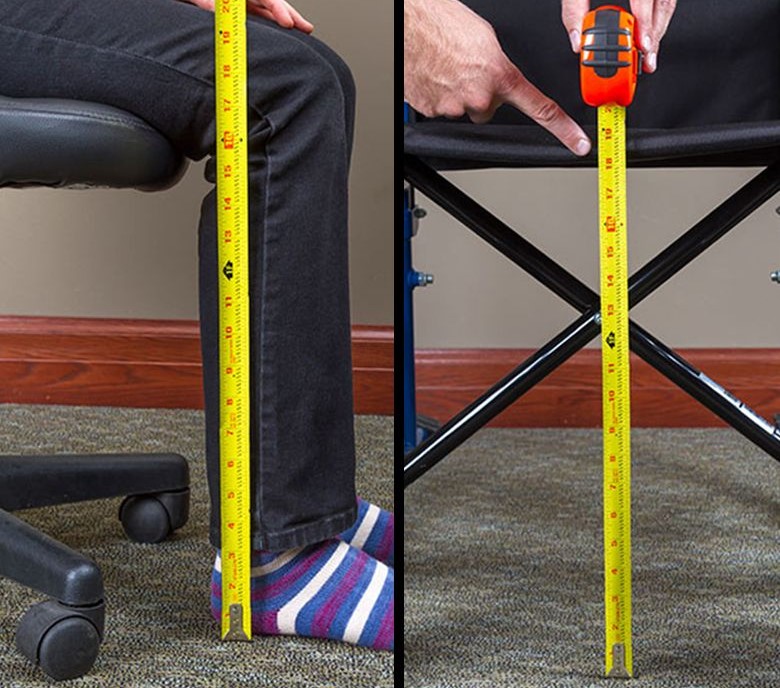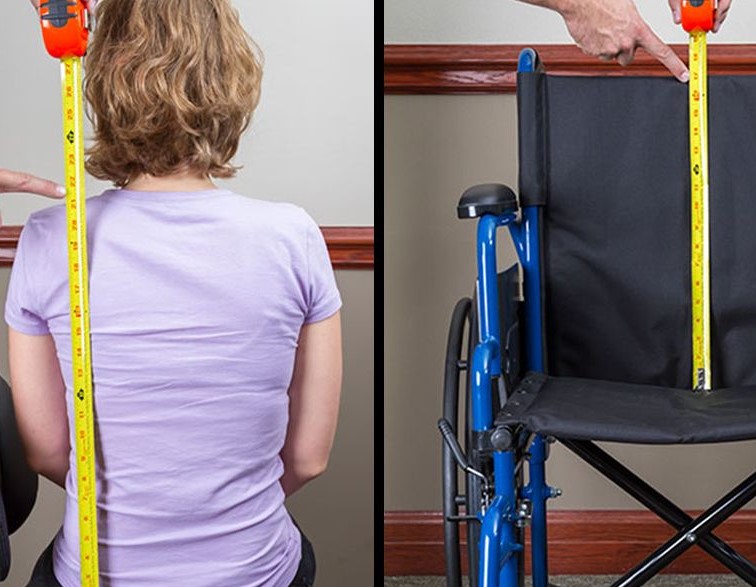Choosing the right wheelchair size is crucial for comfort, mobility, and overall well-being. A poorly fitted wheelchair can cause discomfort, pain, and even long-term injuries, making it more difficult for users to lead an independent life. In the UK, wheelchair users have access to a wide range of options, from manual to powered models, but the first step in choosing the right chair is knowing how to measure properly.
In this guide, we’ll walk you through the process of measuring for a wheelchair in the UK, highlighting the key measurements you need to take, common mistakes to avoid, and UK-specific considerations to help you or a loved one find the perfect fit.
Why Proper Wheelchair Sizing Matters
Comfort and Long-Term Usage
A wheelchair is more than just a tool for mobility – it’s an extension of the user’s body. If the chair doesn’t fit well, it can cause discomfort, leading to issues such as poor posture, muscle pain, and even chronic health problems like pressure sores. When properly fitted, a wheelchair allows the user to sit comfortably for extended periods and move with ease.
Prevention of Pressure Sores and Injuries
One of the most common complications of using a wheelchair is the development of pressure sores. These sores form when prolonged pressure is applied to specific areas of the body, such as the hips and buttocks, often due to incorrect seating. Choosing the right seat width, depth, and cushion can prevent these issues by distributing weight evenly and reducing pressure points.
Enhancing Mobility and Independence
Mobility and independence are key factors in the quality of life for wheelchair users. A properly sized wheelchair allows users to navigate their environment more easily, whether indoors or outdoors. Poor sizing, on the other hand, can make it difficult to maneuver the wheelchair, reducing mobility and leading to dependence on others.
UK-Specific Guidelines for Wheelchair Measurement Standards
In the UK, wheelchair sizing is guided by both NHS standards and the specifications of various manufacturers. These guidelines take into account factors such as weight distribution, body measurements, and individual health conditions. Working with healthcare professionals or a wheelchair supplier is recommended to ensure that the wheelchair fits according to these national standards.
Tools and Techniques for Accurate Measurement
Tools You’ll Need
- A soft measuring tape
- A friend or helper to assist with measurements
- A pen and paper to record the measurements
How to Take Measurements at Home
If you’re measuring at home, it’s important to take your time and follow the guidelines carefully. Have the person sit in a normal, relaxed posture, ensuring that their feet are flat on the floor (or footrests). Use a soft measuring tape for all measurements, and make sure to double-check each one to avoid errors.
Professional Fitting Services in the UK
While measuring at home can be a good starting point, it’s always recommended to seek professional assistance. Many wheelchair suppliers in the UK offer professional fitting services, which can ensure that the measurements are accurate and tailored to the individual’s specific needs.
Step-by-Step Guide to Measure for a Wheelchair
To ensure the best fit, there are several key measurements you need to take. These measurements should be as accurate as possible, as even small miscalculations can lead to discomfort or improper fit. Here are the primary measurements to consider:
Seat Width
Seat width is one of the most important measurements when sizing for a wheelchair. It is typically determined by measuring the widest part of the hips or thighs when seated. This ensures that the wheelchair provides enough room for comfort while also being narrow enough to allow for easy navigation through doorways and tight spaces.
How to measure:
- Have the user sit in their usual seating position.
- Use a measuring tape to measure across the widest part of the hips or thighs.
- Add around 2-3 centimetres for a comfortable fit.

Image source: discountramps.com
Seat Depth
The seat depth refers to the distance from the back of the seat to the front edge. It’s important to get this measurement right, as too short a seat can cause poor leg support, while a seat that is too deep can put pressure on the back of the knees.
How to measure:
- Measure from the back of the user’s hips to the back of their knee, ensuring that the user is sitting upright.
- Subtract about 3-5 centimetres from the measurement to ensure proper leg clearance and avoid pressure at the back of the knees.

Image source: discountramps.com
Seat Height
Seat height determines how far the user’s feet will be from the ground. A proper seat height ensures that the user’s feet rest comfortably on the footrests without straining the legs or back.
How to measure:
- Measure from the floor to the back of the user’s knee.
- Adjust for the height of the footrests and ensure that there is a comfortable gap between the seat and the user’s legs.

Image source: discountramps.com
Back Height
Back height is crucial for providing adequate support to the user’s back. The height of the backrest can vary depending on the user’s preference and their need for support.
How to measure:
- Measure from the seat of the chair to the top of the user’s shoulders (for full support).
- If the user prefers lower back support, measure to the middle of their back or just below the shoulder blades.

Image source: discountramps.com
Armrest Height
Proper armrest height helps to maintain correct posture and provides comfort for the upper body. Incorrect armrest height can lead to strain on the shoulders and neck.
How to measure:
- Have the user sit with their arms bent at a 90-degree angle.
- Measure from the seat of the chair to the user’s elbow, ensuring their shoulders are relaxed.
- Add an additional 2-3 centimetres to ensure a comfortable armrest height.

Image source: discountramps.com
Special Considerations for UK Wheelchair Users
NHS Wheelchair Services Guidelines
In the UK, the NHS offers wheelchair services to individuals who meet certain eligibility criteria. These services can provide access to free or low-cost wheelchairs, including assessment, fitting, and ongoing maintenance. When measuring for a wheelchair through NHS services, users may be required to follow specific guidelines provided by healthcare professionals.
Recommendations for People with Specific Health Conditions
Certain health conditions, such as scoliosis, arthritis, or muscular dystrophy, may require additional considerations when measuring for a wheelchair. For example, users with postural problems may need a specialized cushion or back support, while those with joint issues may benefit from adjustable armrests or leg rests.
Types of Wheelchairs Available in the UK
In the UK, wheelchair users have access to a wide range of models, including:
- Manual wheelchairs: Lightweight and easy to transport, suitable for users with upper body strength or those who have a caregiver to assist them.
- Powered wheelchairs: Motorised options for users who cannot self-propel or need assistance with longer distances.
- Sports wheelchairs: Designed for active users who participate in wheelchair sports, offering enhanced maneuverability and durability.
Each of these models may require slightly different measurements, so it’s important to consult with a professional when selecting the right chair.
Common Mistakes to Avoid
Taking Measurements Without Assistance
It can be difficult to get accurate measurements without help, especially for seat depth and back height. Always have someone assist you when taking measurements to ensure that you’re getting the most accurate results.
Neglecting Specific Adjustments Like Seat Cushions or Footrests
It’s important to factor in additional accessories like seat cushions or footrests, which can affect the overall fit of the wheelchair. Make sure to include these in your measurements, or consult a professional for guidance on how to adjust for them.
Overlooking Posture and Support Requirements
Proper posture is essential for wheelchair users, especially those who spend extended periods of time in the chair. Ensure that the wheelchair provides adequate support for the back, arms, and legs to avoid strain and discomfort.
Conclusion
Accurately measuring for a wheelchair is essential to ensure comfort, mobility, and overall well-being. By following the guidelines outlined in this guide, you can select a wheelchair that perfectly suits your individual needs and enhances your quality of life.
Remember to seek professional assistance from a wheelchair specialist or occupational therapist to ensure you obtain the best possible fit.
Frequently Asked Questions (FAQs)
To find the right wheelchair size, you need to measure key areas like seat width (the widest part of your hips or thighs), seat depth (from the back of your hips to the back of your knees), and seat height (floor to the back of your knees). A professional fitting is recommended for accuracy and comfort.
To self-measure, sit in a normal, relaxed position. Use a soft tape measure to:
Measure seat width across the widest part of your hips or thighs.
Measure seat depth from the back of your hips to just behind your knees.
Measure seat height from the floor to the back of your knee. You’ll also want to measure back height and armrest height if needed. Having someone help you will improve accuracy.
Standard UK wheelchair sizes vary, but the most common seat widths are 16”, 18”, and 20”. Wheelchair seat depths typically range from 16” to 18”. Custom sizes are also available to ensure a perfect fit.
The key measurement standards include:
Seat width: Measure the widest part of the hips or thighs while seated.
Seat depth: Measure from the back of the hips to just behind the knees.
Seat height: Measure from the floor to the back of the knee.
Back height: Measure from the seat to the top of the shoulders (or lower if preferred). These measurements help ensure comfort, mobility, and proper posture.
